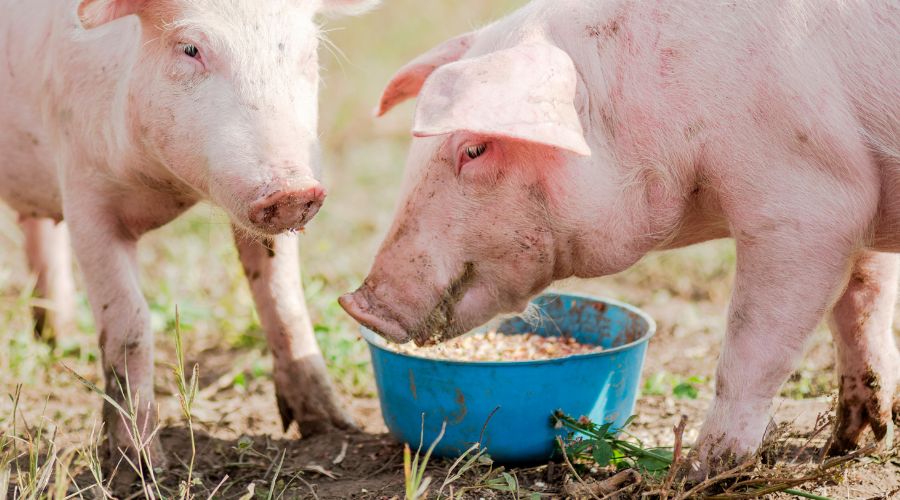Preventing pig diseases is one of the most important parts of running a healthy and productive farm. Understanding common pig diseases and how to manage them helps you protect your livestock and reduce losses. Below is a guide to the most common pig diseases and practical prevention strategies.
1. Swine Dysentery
Swine dysentery is caused by a bacterial infection that affects the large intestine. It leads to diarrhea, reduced appetite, and weight loss in pigs. Young pigs are particularly vulnerable to this disease.
Symptoms:
- Watery or bloody diarrhea
- Weakness and reduced growth rate
- Dehydration
Prevention:
- Maintain strict hygiene in pig pens.
- Use clean water sources and avoid contamination.
- Quarantine new pigs before introducing them to the herd.
- Administer appropriate antibiotics under veterinary supervision [TO BE VERIFIED].
2. Porcine Reproductive and Respiratory Syndrome (PRRS)
PRRS affects the respiratory and reproductive systems of pigs. It spreads through direct contact and contaminated equipment.
Symptoms:
- Breathing difficulties in young pigs
- Reduced fertility or miscarriages in sows
- Weak piglets at birth
Prevention:
- Vaccinate your herd against PRRS.
- Disinfect equipment and pens regularly.
- Limit visitors to the farm to reduce exposure.
3. Foot-and-Mouth Disease (FMD)
Foot-and-mouth disease is a highly contagious viral disease. It affects pigs’ mouths and hooves, causing pain and reduced productivity.
Symptoms:
- Blisters around the mouth, hooves, and teats
- Lameness and reluctance to move
- Fever and reduced appetite
Prevention:
- Implement strict biosecurity measures to prevent exposure.
- Report any suspected cases immediately to local authorities.
- Vaccinate as per local regulations [TO BE VERIFIED].
4. African Swine Fever (ASF)
ASF is a severe viral disease with no known cure or vaccine. It can lead to high mortality rates.
Symptoms:
- High fever and loss of appetite
- Skin discoloration and vomiting
- Sudden death in severe cases
Prevention:
- Avoid feeding pigs with food waste containing meat products.
- Quarantine infected pigs to prevent spread.
- Strengthen biosecurity measures and disinfect pens frequently.
5. E. coli Diarrhea
E. coli diarrhea is a bacterial infection commonly seen in piglets. It causes severe diarrhea and dehydration.
Symptoms:
- Watery, yellowish diarrhea
- Weakness and weight loss
- Dehydration leading to sunken eyes
Prevention:
- Ensure piglets receive adequate colostrum after birth.
- Keep farrowing areas clean and sanitized.
- Provide clean, fresh water and monitor piglets closely.
6. Mange
Mange is a skin disease caused by mites that burrow into the pig’s skin. It leads to itching, hair loss, and discomfort.
Symptoms:
- Intense scratching and rubbing
- Hair loss and thickened skin
- Visible mites in severe cases
Prevention:
- Treat pigs with anti-parasitic medications regularly.
- Clean and disinfect pig pens to eliminate mites.
- Inspect new pigs for mange before adding them to the herd.
7. Mycoplasma Pneumonia
This respiratory disease is caused by a bacterial infection. It spreads through direct contact and contaminated air.
Symptoms:
- Persistent coughing
- Reduced feed intake and growth
- Labored breathing
Prevention:
- Vaccinate pigs against Mycoplasma pneumonia.
- Maintain good ventilation in pig housing.
- Minimize overcrowding to reduce stress.
General Prevention Tips
- Cleanliness: Regular cleaning of pens and equipment reduces the risk of infections.
- Quarantine: Always isolate new or sick pigs to prevent disease spread.
- Vaccinations: Follow a vaccination schedule recommended by your veterinarian.
- Nutrition: Provide balanced diets to strengthen pigs’ immune systems.
- Biosecurity: Limit access to your farm and disinfect footwear and tools.
Staying proactive with these measures helps you maintain a healthy herd. Address any signs of illness promptly to minimize impact on your farm.


